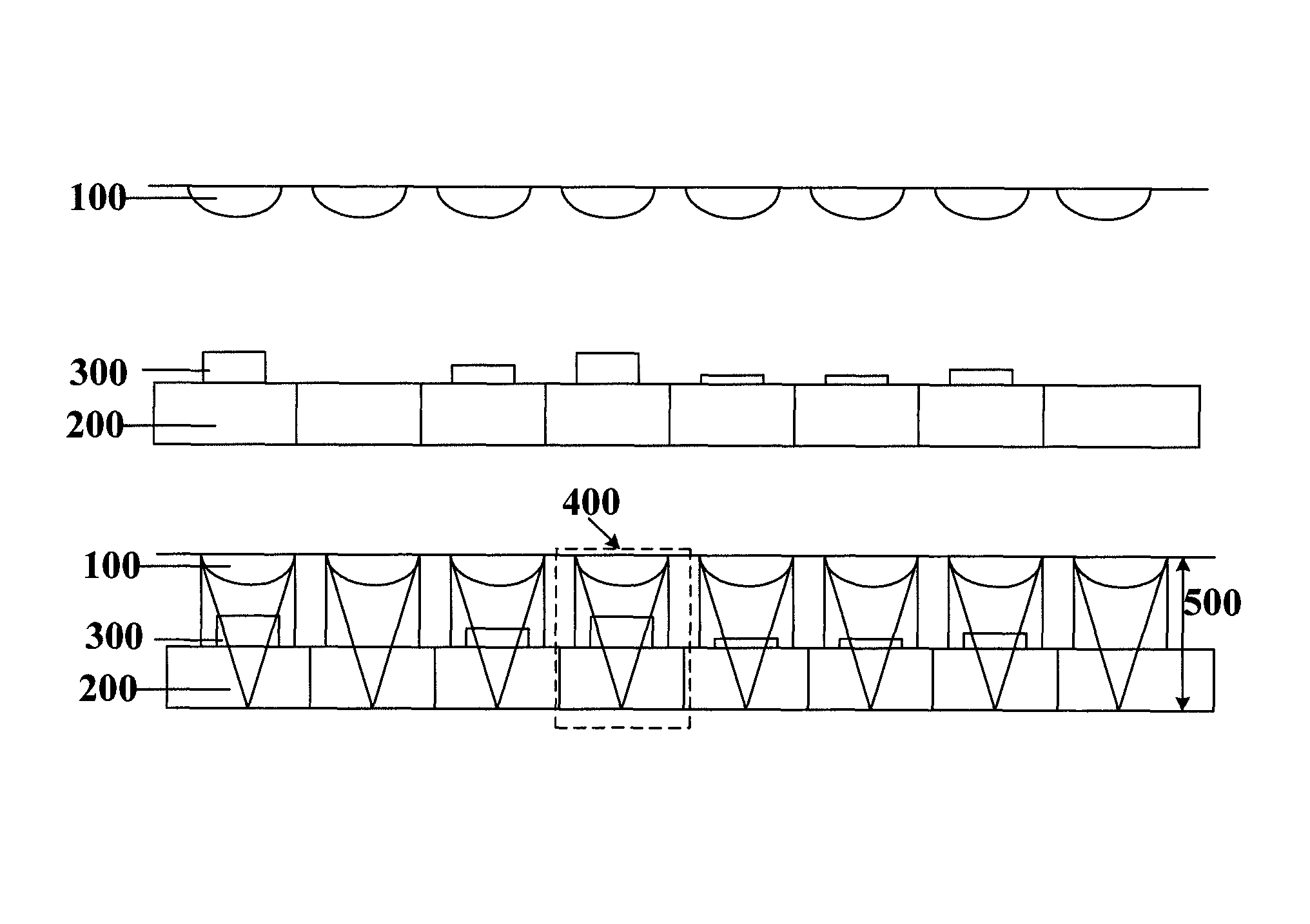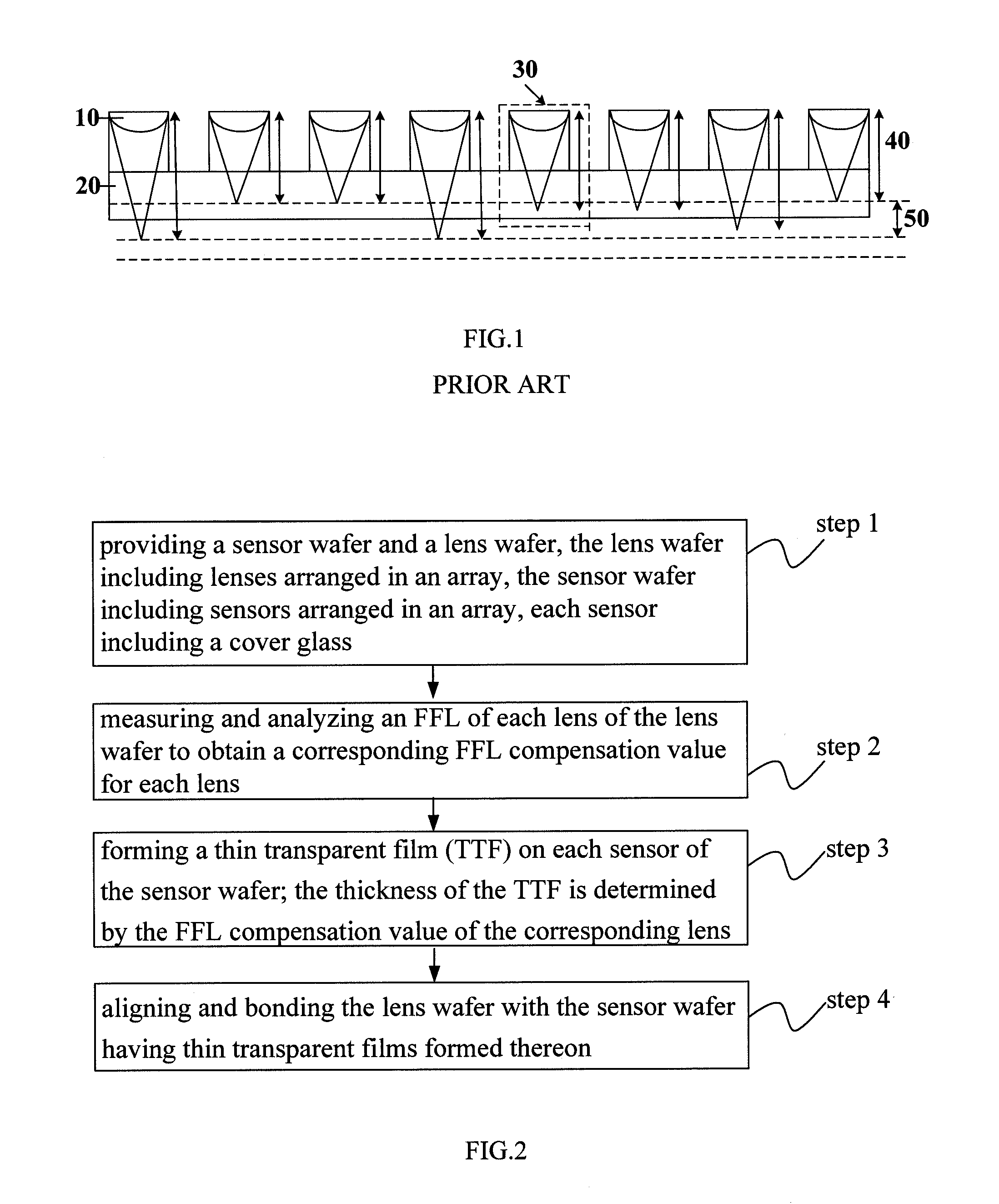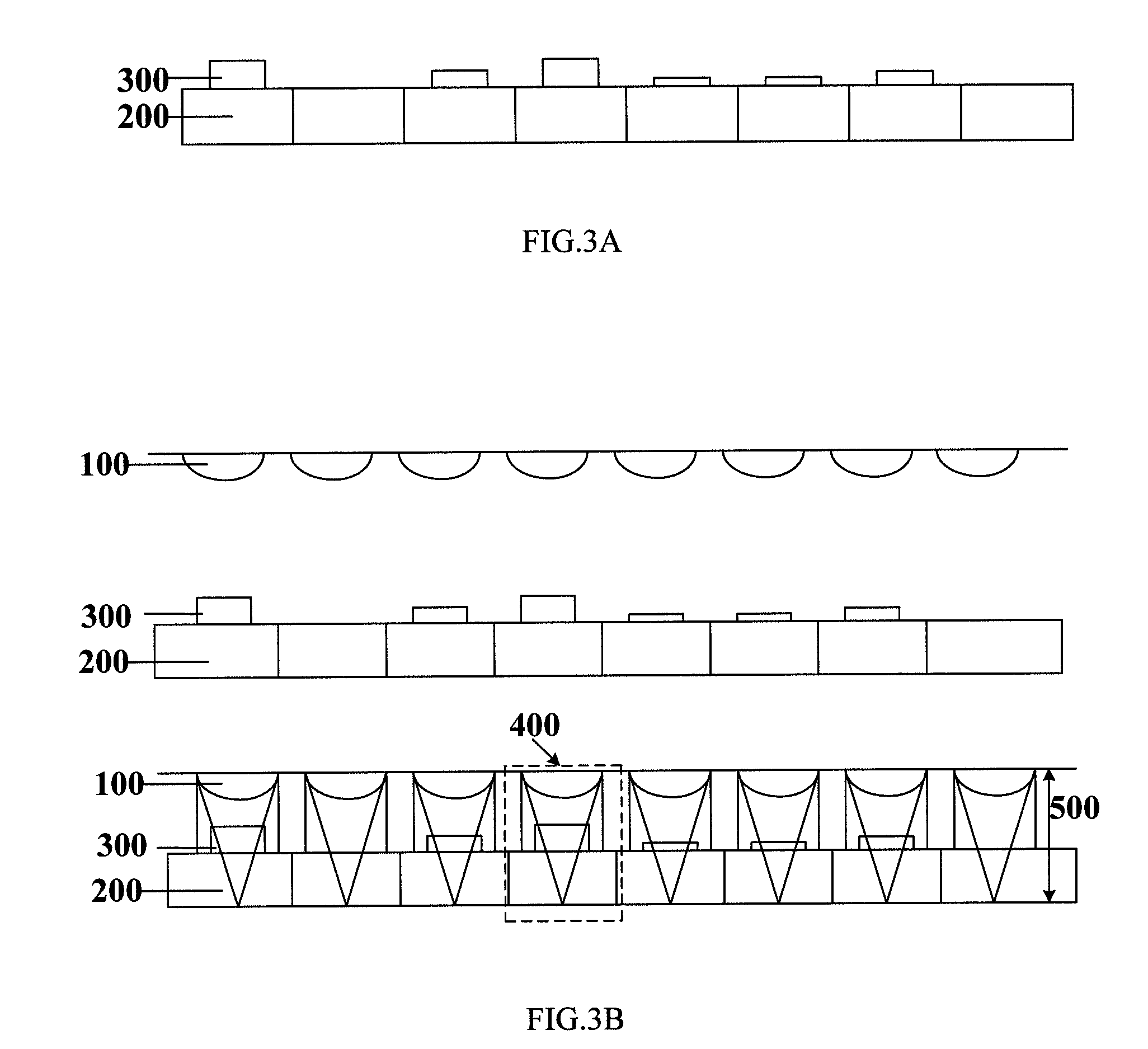Wafer level bonding method for fabricating wafer level camera lenses
a wafer level bonding and camera lens technology, applied in the field of semiconductor manufacturing, can solve the problems of lens performance worse than others, high cost of die-level pick and place process, and high cost of method, so as to achieve tight design tolerance, improve productivity, and reduce the effect of lens variation
- Summary
- Abstract
- Description
- Claims
- Application Information
AI Technical Summary
Benefits of technology
Problems solved by technology
Method used
Image
Examples
Embodiment Construction
[0028]Embodiments of the present invention will be described and specified by using specific examples and figures in follows, and those skilled in the art can easily understand other advantages and beneficial effects of this invention from contents of this specification. The present invention can also be implemented or applied in other specific examples, and details of this specification based on other views and applications can be made to various modifications and variations without departing from the spirit or scope of the invention.
[0029]Detailed analysis on the wafer-level bonding method for fabricating wafer level camera lenses of the present invention will be made below by taking the flow chart shown in FIG. 2 as an example while giving reference to FIG. 3A and FIG. 3B. The method includes the following steps:
[0030]Step 1: a lens wafer and a sensor wafer are respectively produced by using existing fabrication processes. The lens wafer includes lenses 100 arranged in an array a...
PUM
 Login to View More
Login to View More Abstract
Description
Claims
Application Information
 Login to View More
Login to View More - R&D
- Intellectual Property
- Life Sciences
- Materials
- Tech Scout
- Unparalleled Data Quality
- Higher Quality Content
- 60% Fewer Hallucinations
Browse by: Latest US Patents, China's latest patents, Technical Efficacy Thesaurus, Application Domain, Technology Topic, Popular Technical Reports.
© 2025 PatSnap. All rights reserved.Legal|Privacy policy|Modern Slavery Act Transparency Statement|Sitemap|About US| Contact US: help@patsnap.com



